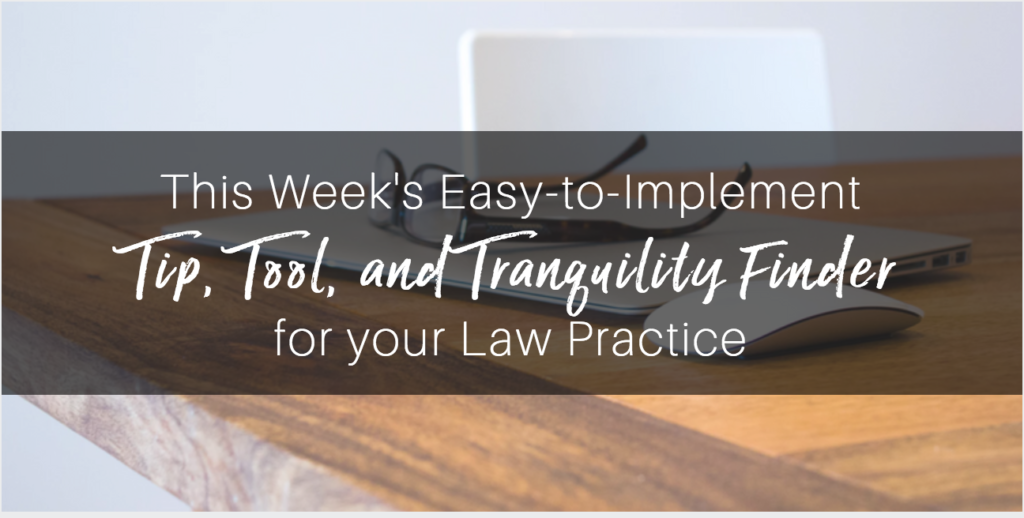FOR THIS MONTH OF JUNE the theme is all about EASY-TO-IMPLEMENT AUTOMATING PROCESSES IN YOUR PRACTICE, so you can focus on lawyering and taking time off during the summer.
Summer is definitely upon us! As a transplanted Swede (from darker, somber surroundings for about 9 months out of the year) no one appreciates the warmer ocean waters and sunlit days more than I. Come July and August when most Europeans are lingering well into their paid 6-8 week vacation, (not that I’m jealous), those of us here in the US generally have a more ‘focused’ period off.
However, there are a few ways you can take your hands off the wheel, enjoy summer, family and friends without disrupting the flow of your practice much. In celebration of your hard work and well-deserved time off I’m going to focus this month on providing you with a few ways to easily implementing automation processes into your practice so you can free up your time.
If you would rather listen in on this blog post, head over to The Social Lawyer Show podcast version for easy listening on your commute, while walking your dog, or yourself…
To begin, let’s address a few preconceived notions I’ve often heard about the idea of “automation” to set the stage and move forward. And, I fully admit, this was a concept I myself grappled with for quite some time. I couldn’t quite reconcile automatization and (vs) personalization. My business has always been about building, nurturing and enjoying the personalization of business. Unlike many other businesses in my space, this personal bit is something I am passionate about, a non-negotiable. What I came to realize however was that one does not exclude the other. There are ways to automate while keeping the genuine personalization. Here are the key points that made sense to me and shaped the foundation for streamlining my own business – and that of clients I’ve worked with over the years.
- Always be thinking about finding ways to automate processes within your practice, and to some extent your outreach to qualify, or progress someone to the point where your human and personal touch takes over. Where that point is exactly varies from person to person, business to business, but you need to clearly define where this is and have that set so everyone on your team, associates, and support staff are all on the same page.
- Clearly distinguish between processes you can and should automate within your firms such as hiring practices, document, management software, with client outreach, engagement, and on boarding. We don’t need to think about personalizing internal processes as much as we absolutely must when communicating to the outside. Think of it this way: Automate processes. Do not automate relationships.
- As law practices scale, they tend to become further removed from the basics. During the early growth stages of a business, face-to-face communication and thoughtful personal interactions are a founder’s bread and butter. Business quickly grows because people feel important. Leads are always followed up with human touch. Then the pressure of scaling becomes real, and growing the stable of well-catered-to, loyal clients means thinking efficiently about how automating processes can cover some of the work founders and partners used to take on themselves. But keep an eye on what and how you are automating, otherwise you may find yourself congratulating your 70+ aged clients on becoming new parents by mistake.
- When it comes to automating processes for external functions including prospect and client relations, we should tread carefully. A healthy and sustainable way to view this refined version of automating is well summarized by the CEO of ActiveCampaign, Jason VandeBoom: “Automation isn’t trying to replace human touch points, but it should be used to qualify, highlight, or progress someone to the right points where human touch is essential.” and Issy Sharp (Four Seasons Hotel founder) supports this by suggesting one should “Systematize the predictable. Humanize the exceptional.”
- First off, look for repetitive activity in your firm. To find missed automation opportunities, gather your team together to discuss what activities are repetitive. Then, look for an automated solution that can perform the task as well or better, while delivering exceptional service. Many of my clients have had great success in taking menial tasks like sorting and responding to emails and automating depending on where the prospect was in the client cycle. Often, this enhanced rather than harmed the client experience. We’ve all heard and know, either through personal experience or from the American Bar Association, that one of the most common attorney complaints from clients is failing to communicate effectively with clients, failing to return calls, and generally keeping clients informed on their case. Lack of these crucial touch points can lead to ethical violations.
- Automating your processes does not need to be complicated to be effective. A complicated system requires more maintenance and is vulnerable to breaking.
- Work ON your business, NOT IN IT! You can’t escape the launch work when starting a practice. It demands attention, effort, and late nights. After launching, extract yourself from the daily operations to work on your business, not in it. Ask yourself what your time is worth. Anything below your pay grade — that can be done cheaper, better, or faster — should be either outsourced or automated. Create a weekly reporting structure, and monitor it a few times a week to hold your team accountable. This will free up more time to work on growth.
WEEKLY TIP, TOOL, EASY-TO-IMPLEMENT STRATEGY
Law firm management software Clio released its “Legal Trends Report” that revealed attorneys were billing at a staggering low 28% of their total work hours. Why? Attorneys are spending too much time on administrative tasks. Take a good hard look at where you as an attorney are spending your time and figure out where you can automate so there’s more time to focus on lawyering. If you’re like the average professional, emailing is eating up more than 6 hours of each of your workdays. As many attorneys have turned to G (Google) Suite now to manage their communications, let’s look at a real time-saving strategy that will improve your efficiency on several levels.
This is one to use in connection with your Gmail. Google does not recognize any dots (.) and plus signs (+) in a Gmail email address. Combinations like gmaillawyer@gmail.com, gmail.lawyer@gmail.com, gmail+lawyer@gmail.com will all go to the central gmaillawyer@gmail.com email address. For a lawyer, this is the perfect opportunity to create multiple accounts on platforms that require email validation to be legitimized. It’s also one way to filter your incoming messages; for example, you could use the gmail+lawyer@gmail.com to sign up for all your content and news updates, then automatically filter all incoming messages to that variation of your address to a “news” label, so your Inbox isn’t as bogged down.
COMING UP NEXT…
In the next episode we’ll dive right into a few auto-pilot tools and strategies with a focus on “Zapping” integrations to streamline and customize some of the most common law tools, apps, and programs including…
- Zapier (which integrates with over 750 leading business applications already)
- Webmerge
- CallTrackingMetrics
- And how to further streamline your connections, emails, email lists and communications in one zap



